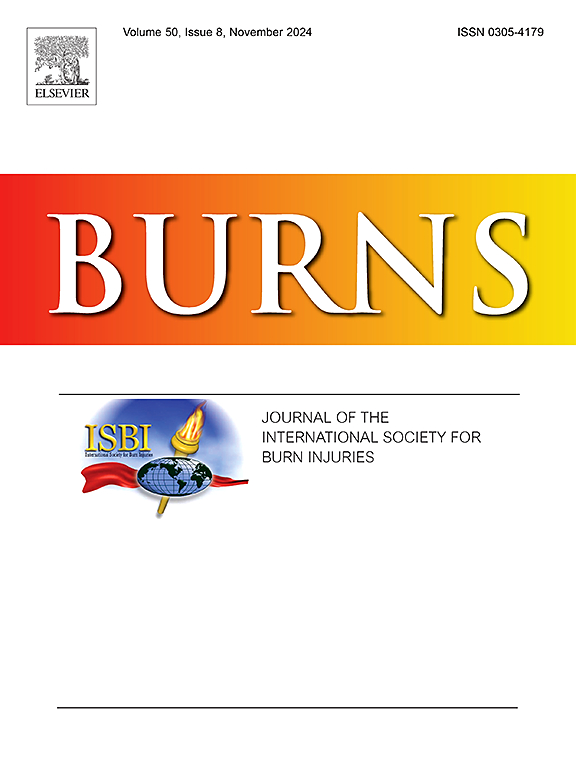自体皮肤细胞悬浮液通过部分烧蚀激光辅助药物输送治疗低色素沉着疤痕不会导致短期重新色素沉着
IF 2.9
3区 医学
Q2 CRITICAL CARE MEDICINE
引用次数: 0
摘要
烧伤后增生性瘢痕常表现为色素沉着,包括色素沉着过多和过少。失活的黑色素细胞通常存在于表皮基底膜中,对疤痕区域的有效激活和色素沉着构成了挑战。本研究探索了另一种方法:使用激光辅助药物递送将含有黑素细胞的细胞悬浮液移植到低色素疤痕中。在猪诱导瘢痕模型中,自体皮肤细胞悬浮液(ASCS)通过CO2分数烧蚀激光创建的通道输送。纵向分析显示,在第1周和第2周,通过数字成像或非侵入性探针,色素区域或可识别的黑色素水平没有增加。组织学检查进一步证实组织活检中没有黑色素,在第63天观察到表皮厚度短暂增加。这种方法在研究的2周时间内没有实现低色素疤痕的重新色素沉着。未来的研究可能会根据这些发现修改递送协议来完善这项技术。本文章由计算机程序翻译,如有差异,请以英文原文为准。
Treatment of hypopigmented scar with autologous skin cell suspension delivered through fractional ablative laser-assisted drug delivery does not lead to short-term re-pigmentation
Post-burn hypertrophic scars often exhibit dyschromia, including hyper- and hypo-pigmentation. Inactivated melanocytes, typically residing in the epidermal basement membrane, pose a challenge for effective activation and repigmentation in scarred areas. This study explores an alternative approach: using laser-assisted drug delivery to transplant melanocyte-containing cell suspensions into hypopigmented scars. In a porcine model with induced scars, autologous skin cell suspensions (ASCS) were delivered via CO2 fractional ablative laser-created channels. Longitudinal analysis using Image J revealed no increase in pigmented areas or discernible melanin levels by digital imaging or non-invasive probes at weeks 1 and 2. Histological examination further confirmed the absence of melanin in tissue biopsies, with a transient increase in epidermal thickness observed at Day 63. This approach did not achieve repigmentation of hypopigmented scars within the study's 2-week duration. Future investigations may refine this technique by modifying delivery protocols based on these findings.
求助全文
通过发布文献求助,成功后即可免费获取论文全文。
去求助
来源期刊

Burns
医学-皮肤病学
CiteScore
4.50
自引率
18.50%
发文量
304
审稿时长
72 days
期刊介绍:
Burns aims to foster the exchange of information among all engaged in preventing and treating the effects of burns. The journal focuses on clinical, scientific and social aspects of these injuries and covers the prevention of the injury, the epidemiology of such injuries and all aspects of treatment including development of new techniques and technologies and verification of existing ones. Regular features include clinical and scientific papers, state of the art reviews and descriptions of burn-care in practice.
Topics covered by Burns include: the effects of smoke on man and animals, their tissues and cells; the responses to and treatment of patients and animals with chemical injuries to the skin; the biological and clinical effects of cold injuries; surgical techniques which are, or may be relevant to the treatment of burned patients during the acute or reconstructive phase following injury; well controlled laboratory studies of the effectiveness of anti-microbial agents on infection and new materials on scarring and healing; inflammatory responses to injury, effectiveness of related agents and other compounds used to modify the physiological and cellular responses to the injury; experimental studies of burns and the outcome of burn wound healing; regenerative medicine concerning the skin.
 求助内容:
求助内容: 应助结果提醒方式:
应助结果提醒方式:


